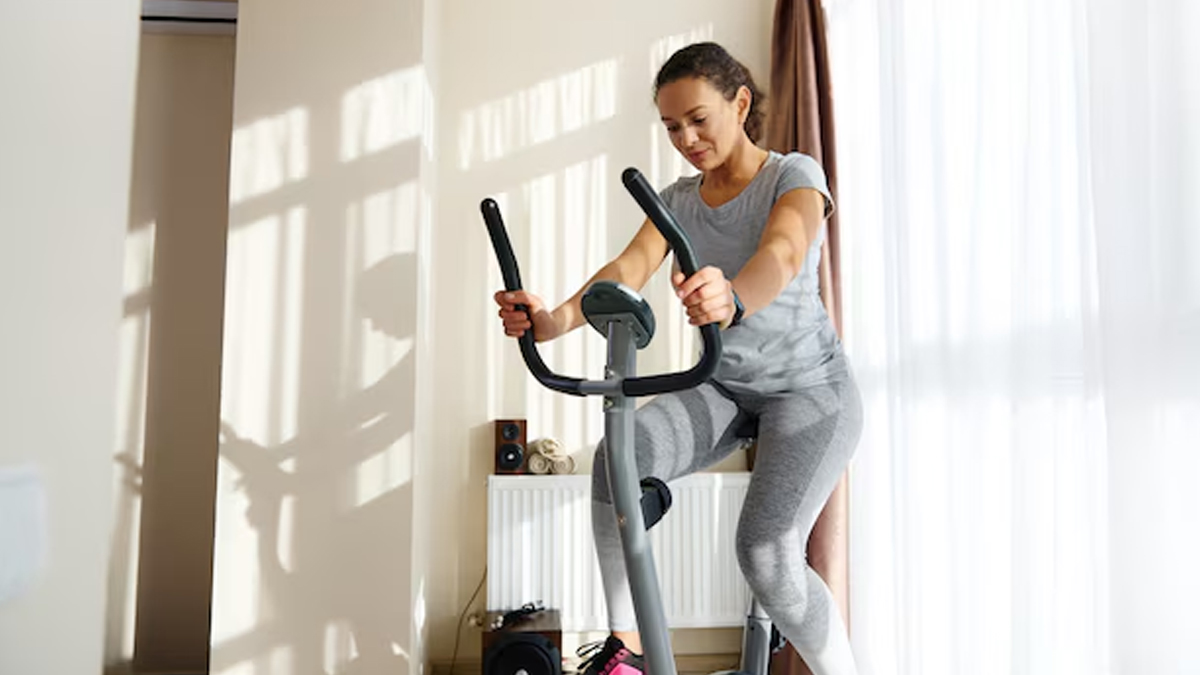
Cardiovascular health is all about protecting your heart and blood vessel health. While diet is a crucial part of maintaining heart health, cardio workouts are essential too. From power walking to running to cycling, there are various ways you can rev up your heart rate and breathing. This in turn helps strengthen the heart muscle and improve blood flow. However, those with a pre-existing heart condition often wonder whether a cardio workout is safe to perform.
Table of Content:-
Dr Ashish Agarwal, Director and Unit Head (Unit-Cardiology), Aakash Healthcare, Delhi, shares that people with heart disease can do cardio workouts, but with proper supervision. "In fact, walking, cycling, or light aerobics under guidance can strengthen the heart," he emphasises, adding that the most important factor to keep in mind is to start slow and be consistent.
Here are some of the safety measures people should keep in mind, especially if they have a pre-existing heart problem.
Also Read: 5 Science-Based Tips To Prevent Heart Diseases: Expert
Choose The Right Type Of Cardio Workout

According to Dr Agarwal, cardio exercises help strengthen the heart muscle, improve blood circulation, and aid in managing weight, blood pressure, and cholesterol. But for heart patients, not all cardio is suitable.
Heart-friendly cardio activities are generally low to moderate in intensity. Brisk walking, slow jogging, cycling at a relaxed pace, and swimming are ideal. These activities help boost cardiovascular fitness without putting excess pressure on the heart.
A 2003 study published in the journal Circulation shows that regular physical activity can significantly lower a person's risk of heart disease and even help one live longer. Simple exercises like brisk walking, cycling, or swimming for just 30 minutes a day can make a big difference. The study found that exercise also helps manage issues like high blood pressure, cholesterol, and diabetes. While there’s a small risk of heart trouble during workouts, it’s far more common at rest—and regular movement actually reduces that risk.
"Even daily 30-minute walks in the park in the morning if the pollution levels are low or gentle yoga can be excellent," says Dr Agarwal, adding that it is best to avoid high-intensity training unless advised.
Know When To Stop

While physical activity is beneficial, it is crucial to pay attention to your body's signals. Some symptoms should never be ignored during or after a workout.
Stop exercising immediately if you experience any of the following:
- Chest pain or tightness
- Irregular or racing heartbeat
- Severe breathlessness
- Dizziness or lightheadedness
- Unusual fatigue or weakness
These could be signs that your heart is under stress. Continuing to exercise under these conditions can lead to serious complications. Always listen to your body and seek medical help if symptoms persist.
Also Read: Can Cycling Support Longevity, Mobility, & Mental Health? Expert Weighs In
The Role Of Warm-Up And Cool-Down
Warm-up and cool-down are essential for heart patients, stresses Dr Agarwal, adding that they prepare your heart and muscles slowly for activity, while a cool-down helps the body return to rest gradually. “If we ignore or miss them, it can lead to sudden spikes or drops in blood pressure or heart rate, which is not good for the heart.”
Warm-up can include light stretching or walking slowly for 5–10 minutes, while cool-down can involve similar movements, gradually slowing the pace and deep breathing to relax the body.
Get A Prior Health Assessment

Dr Agarwal highlights the role of doctor consultation and health assessment for heart patients. “A proper check-up helps assess the risk level and what kind of exercise is safe. Sometimes, tests like ECG or stress tests are done to guide the fitness plan,” he shares.
Bottomline
Exercise is one of the most effective tools for improving heart health, but it needs to be done with care. Choose gentle, heart-friendly cardio activities, always include warm-up and cool-down exercises, and watch out for any red flags during your workout. Most importantly, never begin a fitness routine without professional medical advice. When done right, exercise can be a powerful ally in your journey to better heart health.
Also watch this video
How we keep this article up to date:
We work with experts and keep a close eye on the latest in health and wellness. Whenever there is a new research or helpful information, we update our articles with accurate and useful advice.
Current Version